The students wrote the lyrics themselves, then used AI to generate the melody, vocals, and visuals under the guidance of Dr. Duong.
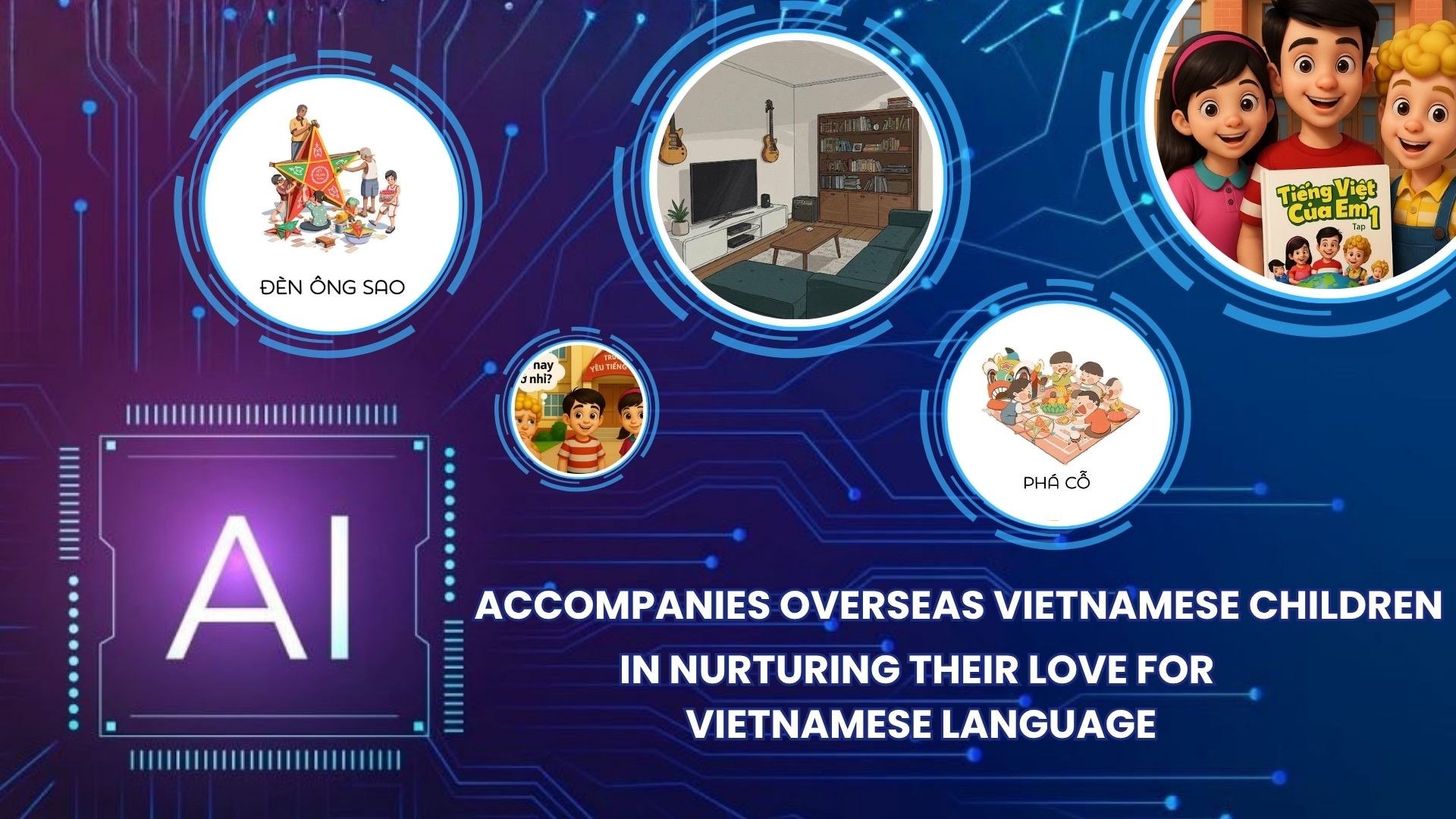 |
 |
 |
| On Saturday evening, in a small house in Western Australia, sisters Khanh An (12) and Khanh Linh (10) eagerly sat down at their study desk. The computer had already opened the Zoom application - where, in just a few minutes, Dr. Nguyen The Duong’s “Love Vietnamese” class would begin. One by one, the small faces appeared on the screen. Although each student was in a different place and time zone, they all shared the same joy: learning Vietnamese - the language that connects them to their homeland. |
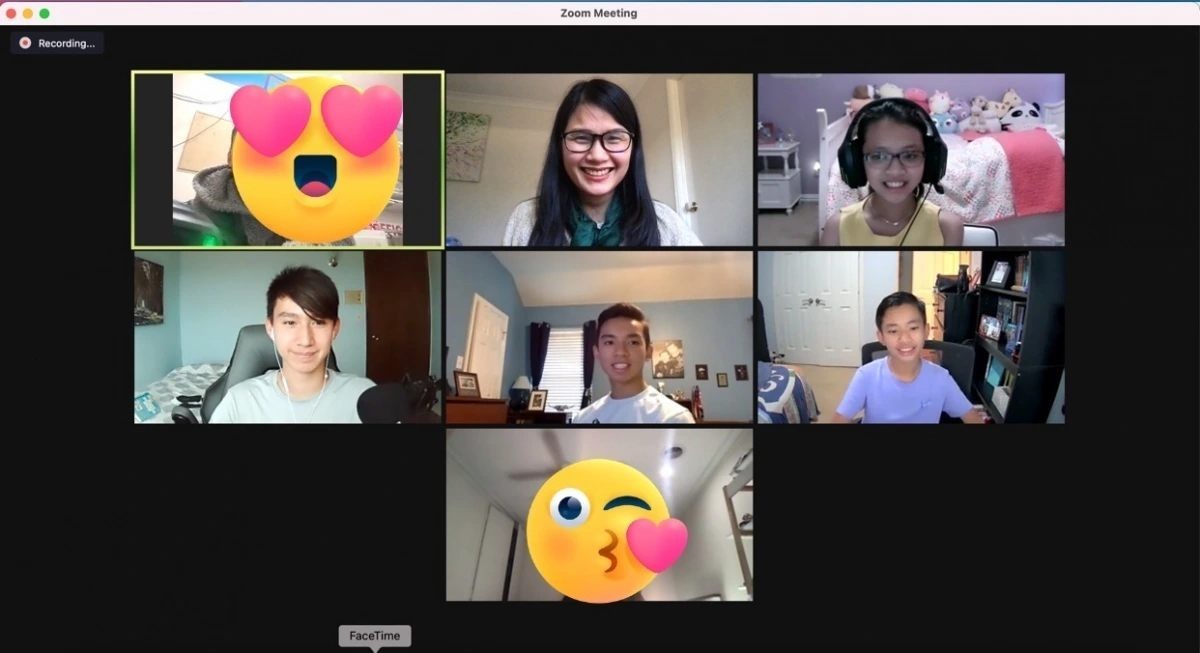 |
| An online class conducted via Zoom by the Yeu Tieng Viet (Love Vietnamese) School. |
|
Today’s class was more special than usual. After reading the assignment prompt - “Describe your living room” - Dr. Duong smiled and instructed, “Now, let’s try using AI Gemini to create an image based on your description.” The whole class burst into excitement. Khanh An and Khanh Linh eagerly typed their first lines: “My living room has a sofa set and a television.” Just a few minutes later, an image appeared on the screen, but it looked strange: the sofa had changed color, and the table had disappeared. The sisters hesitantly tried to add more details: a blue sofa, a table in the middle of the room, a bookshelf with five compartments, a white TV shelf... all in Vietnamese, occasionally asking their teacher in English for suggestions. Each time they clicked “regenerate,” the image on the screen became more and more familiar until it finally showed a cozy scene, with lighting and furniture resembling their real living room. |
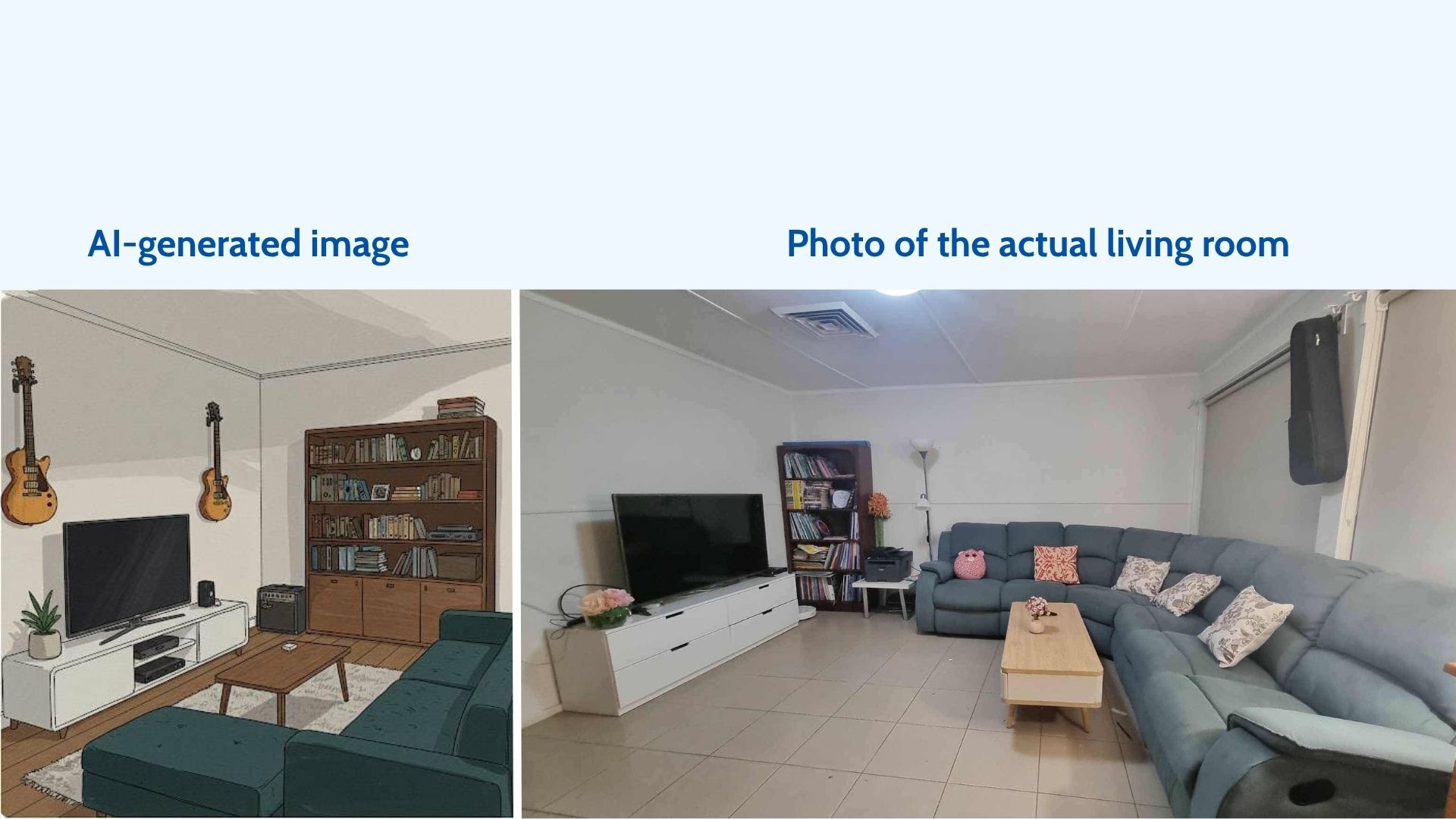 |
|
Not only Khanh An and Khanh Linh but also other students in the class eagerly joined in the activity. Some added a flowerpot, a landscape painting, or a small cat lying on the sofa. Dr. Duong patiently read each student’s description, gently corrected their word choices, and guided them to expand their vocabulary and express themselves more clearly. The lesson ended in excitement, as each child proudly had a vivid picture of their own creation. Ngo Thi Minh Ngoc, mother of the two girls, shared that that evening, right after class, her daughters ran out joyfully exclaiming, “We used AI to draw a picture exactly like our house!” For her, it was a special learning experience. Her children were not only studying but also exploring, figuring out how to describe objects in Vietnamese and proactively asking their teacher for new words. “I was watching from outside and felt happy too,” she said. “AI not only makes the children more interested in learning, but also encourages them to observe and express themselves more carefully in Vietnamese. The beauty of this seemingly simple lesson is that it helps them learn how to think, how to speak, and feel the joy of seeing their Vietnamese words come to life before their eyes.” |
 |
| For Dr. Nguyen The Duong, Co-founder and Director of the Yeu Tieng Viet (Love Vietnamese) School, such lessons are more than just teaching sessions - they are journeys of nurturing a deep affection for the mother tongue. |
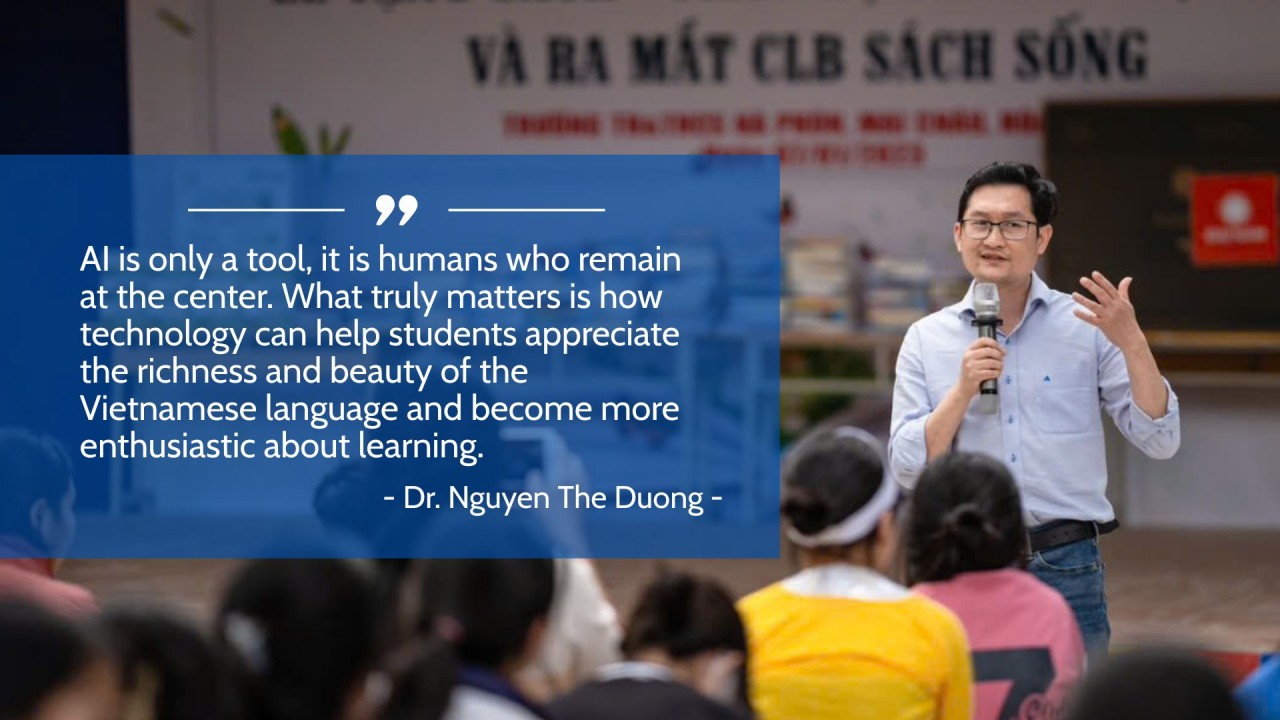 |
|
Dr. Duong shared that Yeu Tieng Viet began incorporating artificial intelligence about two years ago, when he recognized the potential of generative tools for creating images, sounds, and texts. It started as a small experiment, using AI to generate illustrations for lessons, helping children visualize concepts, objects, or characters from folk tales. Later, he expanded its use by applying AI music generation tools like Suno to turn poems and songs written by students into complete melodies, and AI video tools like Sora to recreate the scenes they described in their writing. “When the children see their own writing turned into a song or a short video, they get so excited,” he said. “It makes learning Vietnamese no longer dry or abstract, but a space for creativity, where they can watch their imagination come alive on the screen.” |
|
The students wrote the lyrics themselves, then used AI to generate the melody, vocals, and visuals under the guidance of Dr. Duong. |
| AI not only brings new learning experiences to students but also serves as a powerful assistant for Dr. Duong himself throughout his teaching process. Before each class, he spends time carefully preparing lesson plans, and artificial intelligence tools such as ChatGPT and Gemini have helped him organize, streamline, and optimize the content. AI also assists him in reviewing each lesson afterward. Instead of manually noting every comment and student reaction as before, he can now access automatically generated summaries that show the percentage of students who spoke up, their level of participation, which parts sparked the most interest, and which parts remained unclear. |
 |
| AI helps create images that reflect students’ creativity and spark their interest in learning. |
|
“AI does not replace the teacher’s observation,” Dr. Duong shared, “but it provides me with a very accurate mirror to better understand each student. This allows me to track their progress over time, adjust teaching methods accordingly, and personalize their learning journey. For students living far away, the data compiled by AI also helps parents easily follow their child’s learning process, creating a closer connection between the family and the classroom.” |
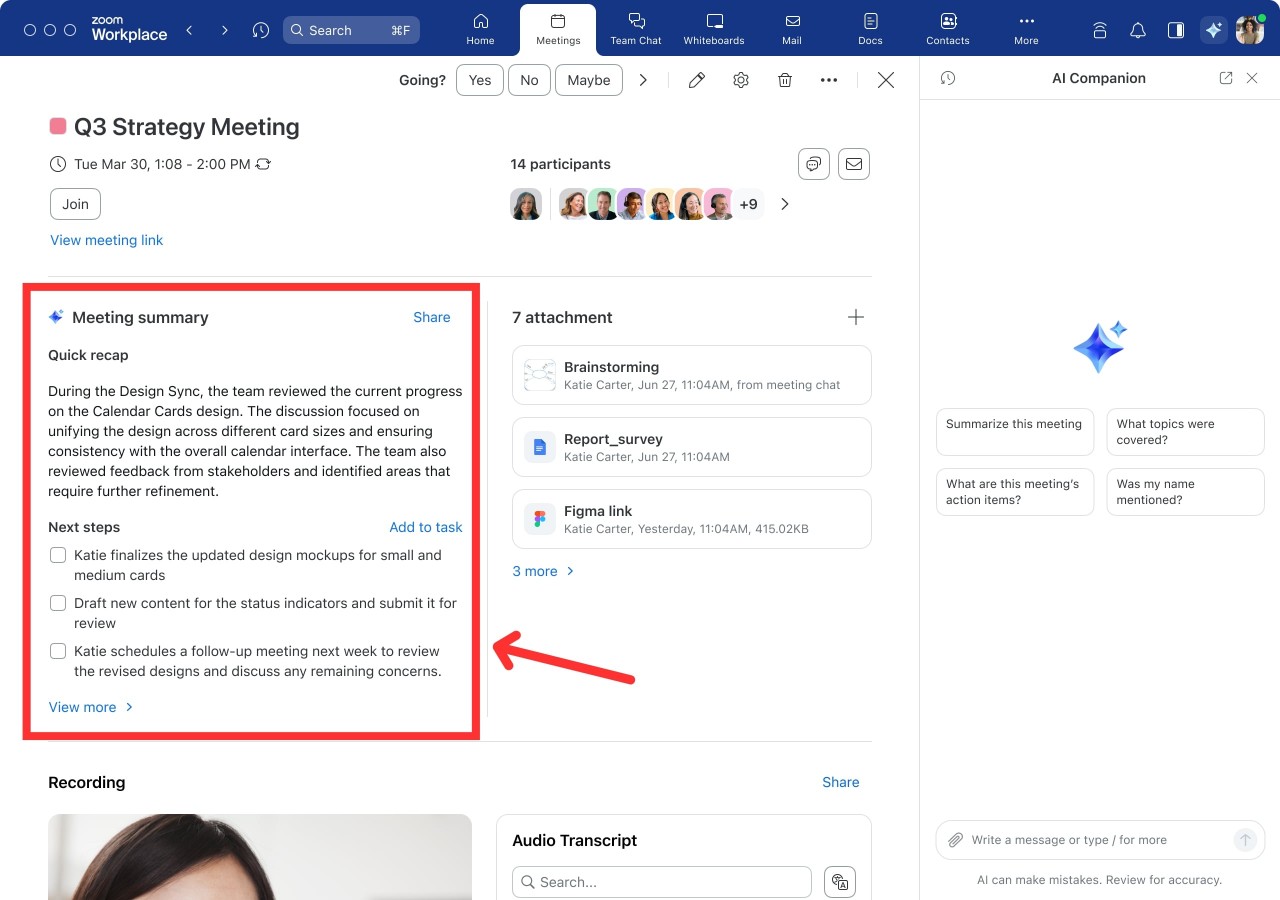 |
| AI assists teachers in summarizing lesson content and analyzing key indicators after each class. |
|
However, according to Dr. Duong, AI is only truly effective when used in a controlled and mindful way. “We always remind students and parents that AI is an assistant, not a replacement. Sometimes before teachers can even get used to it, students already know how to use AI to write their Vietnamese essays. But you can tell immediately - those essays lack emotion, and they miss the ‘endearing mistakes’ that children learning their mother tongue abroad often make.” Therefore, in every class, he always guides students to use AI consciously, only to spark ideas or support illustration, not to do the work for them. “What AI does not have, and will never have, is emotion. Vietnamese is a language of feelings, memories, and connection. Machines cannot learn those things on our behalf,” he emphasized. What brings him the greatest joy is the positive response from both students and parents. Children, by nature curious, quickly grasp new tools, while parents are both surprised and touched to see their kids writing more fluently, confidently, and enthusiastically in Vietnamese. Dr. Duong shared that in the coming time, Yeu Tieng Viet School plans to further expand its AI-integrated classes and develop a digital learning resource system, so that more Vietnamese children around the world can have the opportunity to learn, understand, and fall in love with the Vietnamese language. |
 |
|
After more than six years of operation, the Yeu Tieng Viet (Love Vietnamese) School has become a “global classroom” for children of Vietnamese origin across five continents. According to Dr. Nguyễn Thế Dương, the school has so far registered and taught over 10,000 students, with nearly 600 attending classes regularly. “Some are studying in Australia, others in France, the United States, or Japan - yet thanks to Zoom and AI, they can learn and create together. I often joke that as long as the Internet connection is stable, the Vietnamese language can ‘fly’ across the world,” Dr. Duong said with a smile. More than just a language class, Yeu Tieng Viet has also become a miniature space of Vietnamese culture, where every lesson carries a glimpse of the homeland. In his teaching program, Dr. Duong naturally and vividly weaves in elements of national culture. The children listen to folk tales, proverbs, and idioms; learn about traditions such as Tet, the Mid-Autumn Festival, and the Hung Kings’ Commemoration Day; and sing familiar Vietnamese children’s songs. |
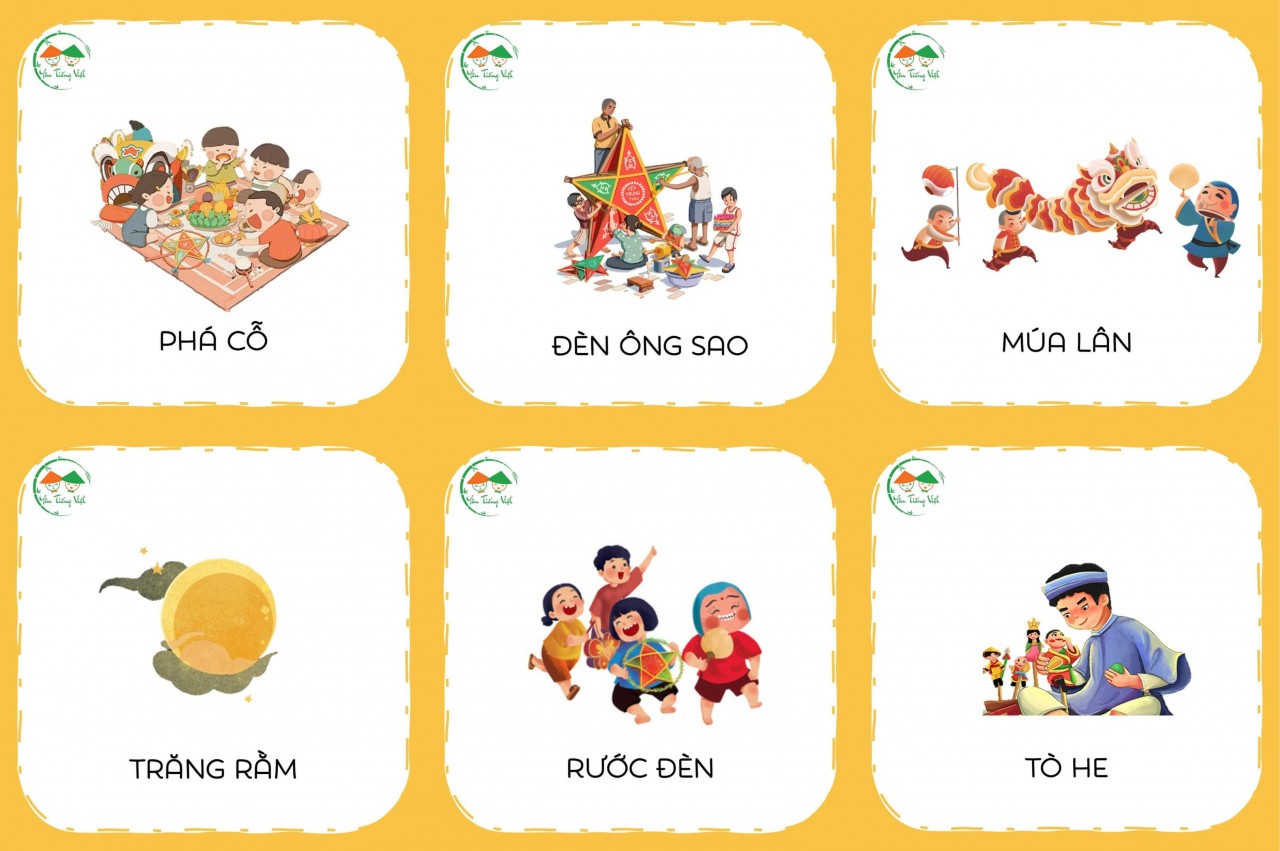 |
| AI is also applied to create images that incorporate elements of Vietnamese culture into the lessons. |
| Beyond the online world, on special occasions, Yeu Tieng Viet also organizes extracurricular activities and in-person gatherings. In Australia, students have opportunities to meet each other, take part in cultural exchanges and art performances, and make crafts related to Vietnamese cultural themes. At the same time, the school arranges trips back to Vietnam, where students visit Hanoi, meet local friends, donate books to children in mountainous areas, and join exchange activities at rural primary schools. |
| The children of Yeu Tieng Viet School meet and participate in games in Sydney, Australia. |
| “Such trips help the children realize that Vietnamese is not just something in their textbooks, it lives in greetings, laughter, and the stories of their homeland. When they set foot in Vietnam, they understand that the language they have been learning is the bridge that connects their hearts with their Motherland,” Dr. Duong shared. |
 |
| For Dr. Duong, every overseas Vietnamese child who can speak, write, and love the Vietnamese language is like “a small thread” contributing to the weaving of the Vietnamese cultural tapestry across the globe. “Yeu Tieng Viet is not just a school,” he said, “it is a community - a place where we preserve the language and spread our love for Vietnam together.” |
|
By Mai Anh Published on: November 03, 2025 |